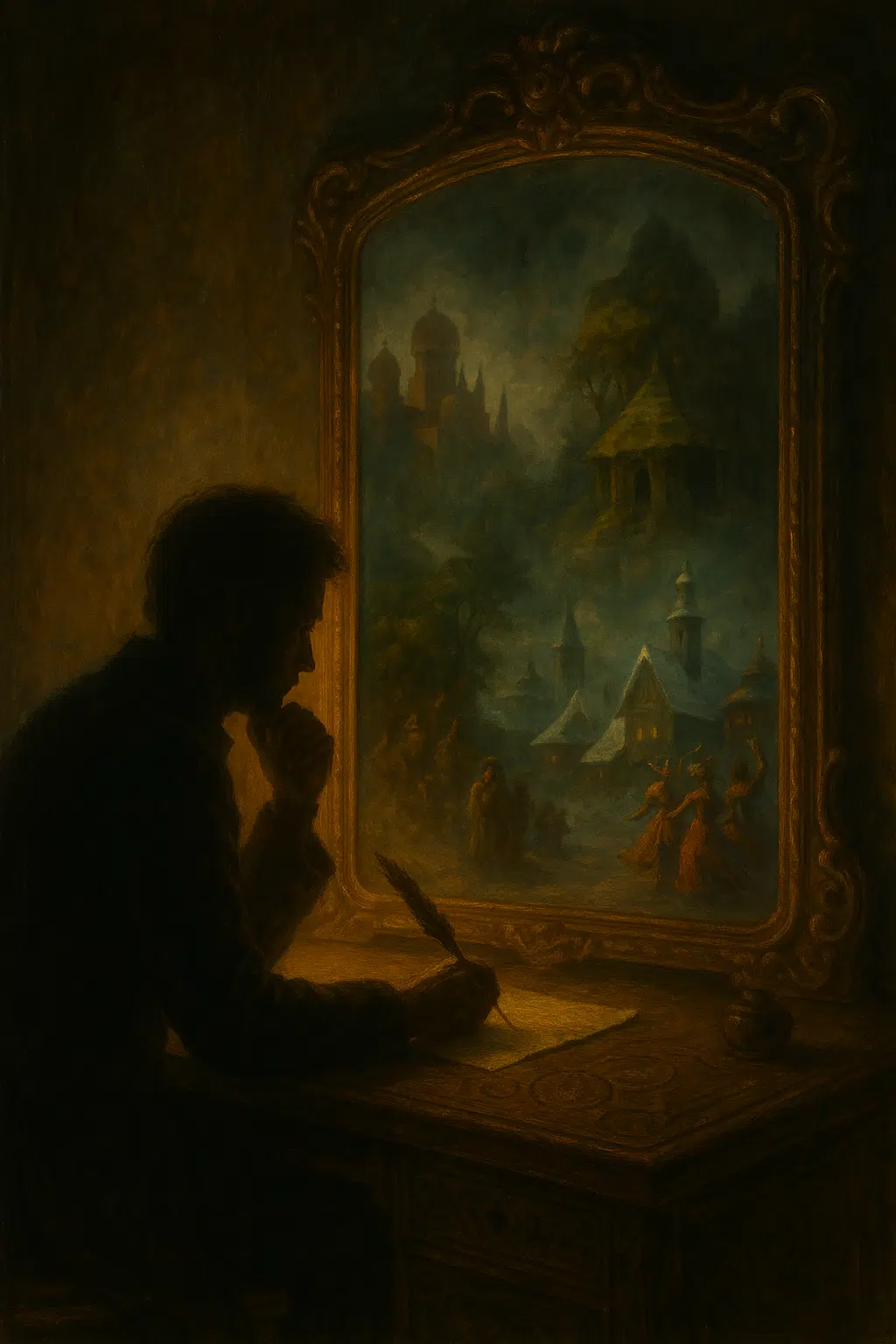Every story ever written emerges through a specific cultural lens, shaped by the invisible hand of the author’s background, experiences, and heritage. When Chinua Achebe wrote Things Fall Apart as a response to colonial literature, he wasn’t merely telling a story—he was reclaiming narrative authority for his culture and challenging centuries of Western portrayal of Africa.
This dance between writer and cultural representation forms one of literature’s most profound relationships. Writers don’t simply document culture—they actively shape it, question it, and sometimes transform it entirely. The stories we choose to tell, the perspectives we elevate, and the nuances we capture (or miss) ripple outward, influencing how readers understand both familiar and unfamiliar worlds.
For writers, this creates both opportunity and responsibility. Your background inevitably colors every character you craft and every setting you build. Yet the most powerful cultural representation happens when authors move beyond mere reflection toward conscious engagement with both their own cultural framework and those they portray.
The boundary between authentic representation and appropriation has become increasingly scrutinized, leaving many writers uncertain about navigating cultural territory beyond their own experience. Some retreat to writing only what they know firsthand, while others proceed without adequate consideration for the complex tapestry of experiences they’re attempting to capture.
The path forward lies not in avoiding cultural representation altogether but in approaching it with intention, research, and humility. Understanding how your unique perspective shapes your storytelling becomes the foundation for creating literature that resonates with truth while expanding beyond the limitations of a single cultural viewpoint.
The relationship between an author’s background and their representation of culture in literature is profoundly symbiotic. Writers don’t merely reflect their cultural experiences—they actively shape and redefine cultural identities through their work, creating a continuous dialogue between personal heritage and literary expression.
Recognize your cultural lens: Every writer observes the world through a specific cultural framework that influences character development, setting choices, and thematic exploration. Acknowledging this lens is the first step toward mindful representation.
Research beyond your lived experience: When writing outside your cultural background, comprehensive research becomes both ethical responsibility and artistic necessity. Interviews, primary sources, and immersive experiences provide authentic details that superficial research can’t capture.
Seek sensitivity readers strategically: Sensitivity readers aren’t merely checkboxes for approval but valuable collaborators who can identify blind spots in your cultural representation. Choose readers with direct experience of the cultures you’re portraying.
Balance authenticity with artistic freedom: The most compelling cultural representation occurs at the intersection of factual accuracy and creative interpretation. Authentic details create credibility while artistic expression prevents characters from becoming mere cultural archetypes.
Examine your motivations honestly: Before writing about another culture, question your purpose. Are you amplifying underrepresented voices, exploring cultural dynamics, or simply using exotic elements as decoration? Your intention shapes every aspect of your narrative approach.
Understand representation as evolution: Cultural portrayal in literature isn’t static—it evolves through generations of writers who build upon, challenge, or subvert previous representations. Your work becomes part of this ongoing conversation.
Navigate power dynamics consciously: Consider the historical and contemporary power relations between your own cultural background and the one you’re representing. This awareness helps avoid inadvertently reinforcing harmful narratives or stereotypes.
The responsibility of cultural representation isn’t just about avoiding missteps—it’s about participating thoughtfully in literature’s role as both mirror and catalyst for cultural understanding. As we explore these dynamics further, we’ll see how authors throughout history have navigated these challenges and transformed literature in the process.

The Writer as Cultural Mirror
How personal heritage shapes literary perspectives
Writers are inevitably shaped by the cultural currents that raised them. Every author carries an invisible inheritance—a constellation of values, assumptions, taboos, and traditions absorbed through family dynamics, educational systems, and social environments. This cultural DNA structures how writers perceive conflict, interpret human behavior, and construct meaningful narratives.
Consider how Jane Austen’s positioning within the English gentry colored her acute observations of social behavior. Her novels examine marriage, status, and moral character through the particular lens of early 19th-century English country society. The confined domestic spheres of her female characters weren’t merely plot devices but reflections of Austen’s lived experience within a society that sharply circumscribed women’s opportunities.
Similarly, James Baldwin’s searing explorations of American racial dynamics in works like “Go Tell It on the Mountain” and “The Fire Next Time” emerged directly from his experiences as a Black man in mid-20th century America. His personal navigation of racial hatred, religious complexity, and sexual identity provided the raw material from which he crafted his incisive cultural critiques.
The writer’s cultural background provides not just subject matter but an entire epistemology—a way of knowing and interpreting the world. Toni Morrison once observed that she wrote her novel “Beloved” because “there was no literature that took that kind of pain seriously.” Her recognition of this absence in American literature stemmed directly from her understanding, as a Black woman, of the unacknowledged traumas of slavery that mainstream literature had failed to confront.
The reciprocal relationship between identity and expression
While a writer’s cultural identity shapes their work, the relationship runs both ways. Through the act of writing, authors often clarify, question, or reconstitute their own cultural identity. The page becomes both mirror and laboratory—reflecting aspects of inherited culture while allowing writers to interrogate and sometimes transform their relationship to that inheritance.
Amy Tan’s exploration of Chinese-American mother-daughter relationships in “The Joy Luck Club” wasn’t only a portrayal of cultural dynamics she observed—it was part of her own process of understanding her relationship with her mother and Chinese heritage. Through writing, she externalized internal cultural conflicts, examined them from multiple perspectives, and discovered new dimensions of her bicultural identity.
For diasporic and immigrant writers especially, literature often serves as a means of cultural reconciliation and identity formation. Salman Rushdie’s novels don’t merely depict the hybrid cultures of post-colonial societies; they enact hybridization through their very language and structure. His work doesn’t just describe cultural in-betweenness—it performs it, creating new cultural possibilities through linguistic innovation and narrative experimentation.
This reciprocal relationship grows increasingly complex for writers with multifaceted cultural identities. Ocean Vuong, as a gay Vietnamese-American poet and novelist, doesn’t merely alternate between separate cultural identities but creates work from their intersection. His novel “On Earth We’re Briefly Gorgeous” examines how sexuality, immigrant experience, and class converge in ways that can’t be neatly disaggregated.
Unconscious Cultural Fingerprints in Writing
The invisible framework behind character development
Even when writers consciously attempt to transcend their cultural backgrounds, unconscious cultural assumptions profoundly shape character development. The traits characters exhibit, their inner conflicts, and the behaviors deemed sympathetic or reprehensible often reflect the cultural values authors have internalized.
Western writers frequently create protagonists who prioritize individual fulfillment and personal autonomy, values deeply embedded in Western individualism. Their characters often struggle against social constraints, seeking to express authentic selves—a narrative arc that makes immediate sense within cultures prioritizing individual self-actualization. Compare this with characters from collectivist cultural traditions, where protagonists might find fulfillment through fulfilling family obligations or community responsibilities rather than breaking free from them.
These underlying frameworks appear in seemingly neutral character decisions. When writers default to characters who confront authority figures directly, prefer explicit communication over implicit understanding, or seek psychological closure through verbal processing, they often unconsciously reproduce specific cultural patterns. The heroic character who “speaks truth to power” embodies Western valorization of direct confrontation in a way that might feel foreign to cultures that prioritize harmony and indirect communication.
Even a character’s emotional landscape bears cultural fingerprints. Which emotions characters express freely versus suppress, how they conceptualize mental health, and what constitutes emotional maturity all vary significantly across cultures. A Japanese writer might create characters whose emotional restraint signifies dignity and consideration for others, while an American writer might interpret similar restraint as unhealthy repression.
When settings reveal more about authors than intended
Settings often betray a writer’s cultural positioning more clearly than any other narrative element. The details writers notice and emphasize, the aspects of environments they find noteworthy or exotic, and their conception of “normal” versus “other” spaces all reveal cultural vantage points.
When Western authors write about non-Western settings, they frequently foreground elements that contrast with Western norms—bustling markets, unfamiliar foods, distinctive clothing—while omitting features that might complicate exotic portrayals, like contemporary technology or global business practices. The resulting settings become what Edward Said termed “Orientalist” constructions—reflections of Western imagination rather than multi-dimensional realities.
These cultural fingerprints persist even in fantasy and science fiction. Writers creating entirely invented worlds still draw from cultural reference points. The societal structures, kinship patterns, and value systems of fictional worlds typically reflect authors’ internalized understanding of how societies function. Ursula K. Le Guin consciously recognized this tendency in her early work, later noting how her groundbreaking novel “The Left Hand of Darkness” still contained assumptions about gender despite her attempts to imagine beyond binary gender systems.
Settings also reveal cultural perspectives through what writers treat as requiring explanation versus what they consider self-evident. An American writer describing a Japanese tea ceremony might meticulously detail its unfamiliar elements while taking suburban American life as requiring no explanation—revealing their own cultural positioning through patterns of explanation and omission.
Language choices as cultural signifiers
Perhaps the most subtle yet pervasive cultural fingerprints appear in language itself. Word choice, metaphorical systems, and narrative structures all carry embedded cultural values that shape readers’ perceptions in ways that often escape conscious awareness.
Languages differ dramatically in how they categorize experience. English makes temporal distinctions through tense changes while Hopi encodes whether events are manifest or manifesting. These linguistic structures shape how writers conceptualize and represent time. A writer working in English might naturally create narratives that separate past from present sharply, while a writer from a culture with different temporal concepts might produce more cyclical or layered timeframes.
Metaphorical systems similarly reveal cultural frameworks. Western literary traditions frequently employ nature metaphors reflecting control and separation: “conquering mountains,” “taming rivers.” Contrast this with indigenous writing traditions where metaphors often express reciprocal relationships with natural elements. The difference isn’t merely stylistic but reflects fundamental differences in cultural relationships with the natural world.
Even seemingly neutral narratological choices carry cultural weight. Linear plots with clear causal relationships and resolution-oriented arcs reflect specific cultural storytelling traditions. Western narrative conventions prioritizing conflict and resolution aren’t universal but culturally specific. Writers raised with these conventions often unconsciously reproduce them even when attempting to represent cultures with circular or episodic storytelling traditions.

Writing Beyond the Self
The ethics of portraying unfamiliar cultural experiences
Writing beyond one’s own cultural experience raises complex ethical questions. At its core lies a fundamental tension: the impulse to explore diverse human experiences through imagination collides with concerns about misrepresentation, cultural appropriation, and silencing authentic voices.
No absolute prohibition exists against writing characters from different backgrounds—literature’s empathetic imagination allows writers to transcend personal limitations. However, this freedom carries corresponding responsibilities. The more distant a culture from the writer’s lived experience, and the more historically marginalized that culture has been, the greater the obligation for rigorous research, consultation, and self-awareness.
Power dynamics complicate these considerations. When writers from historically dominant cultures portray historically marginalized ones, they risk reproducing harmful patterns of cultural extraction. The writer must ask: Am I contributing to a more nuanced understanding of this culture, or am I mining it for exotic elements while reinforcing stereotypes? Am I creating space for diverse stories, or occupying space that might otherwise feature authentic voices?
The stakes of misrepresentation vary significantly. Inaccurate portrayal of dominant, well-represented cultures rarely causes harm, as numerous alternative representations exist. Conversely, misrepresentations of marginalized cultures can perpetuate damaging stereotypes when few counternarratives exist in mainstream literature. When Barbara Kingsolver wrote “The Poisonwood Bible” about colonial missionaries in the Congo, she recognized this responsibility, approaching the work with extensive research and awareness of her limitations as an outsider.
Deep research versus superficial cultural tourism
Meaningful cultural representation requires commitment to deep research that goes beyond superficial details. Superficial cultural tourism in literature—collecting exotic settings, ceremonies, foods, and clothing without engaging with underlying values, histories, and worldviews—produces hollow representation that often reinforces rather than challenges stereotypes.
Effective research extends beyond general reading to include primary sources, direct engagement with community members, and critical examination of one’s assumptions. When Yaa Gyasi researched “Homegoing,” her novel spanning centuries of Ghanaian and African-American experience, she combined historical research with visits to Ghana, interviews with community elders, and engagement with oral histories. The resulting work achieves a depth that transcends cultural voyeurism.
Deep research also means engaging with works by writers from the cultures being portrayed. Reading literature produced within the culture provides insights into narrative traditions, linguistic patterns, and cultural nuances that outsider accounts rarely capture. This literary immersion helps writers avoid reproducing stereotypical representations and connect with authentic cultural concerns.
Most importantly, deep research involves listening to criticisms from within the represented community. When members of a portrayed culture identify problematic elements in representation, these critiques offer invaluable opportunities for growth rather than threats to artistic freedom. Writers who approach such feedback defensively miss crucial opportunities to deepen their understanding.
When imagination meets responsibility
The writer’s imagination remains essential even when portraying unfamiliar cultures. Research alone produces dry sociology, not compelling fiction. The challenge lies in finding the appropriate balance between imaginative engagement and responsible representation—what Zadie Smith has called “the right to become the other but with knowledge, skill, and respect.”
This balance requires recognition that imagination works differently when applied to familiar versus unfamiliar cultural territory. When writing within familiar cultural frameworks, writers draw unconsciously from a deep well of lived experience. When venturing beyond those frameworks, imagination must be scaffolded by research, consultation, and heightened awareness of potential blind spots.
Responsible imagination also means recognizing the difference between empathetic identification and cultural appropriation. Empathetic identification seeks to understand others’ experiences while acknowledging differences and limitations. Appropriation involves claiming or exploiting cultural elements without permission, acknowledgment, or reciprocity.
The most successful cross-cultural writing happens when writers approach unfamiliar cultures not as exotic territories to colonize but as complex human realities to engage with humbly. Thai American writer Pitchaya Sudbanthad has suggested that writers ask themselves: “Am I representing this culture in a way that someone from that culture would recognize as truthful, not necessarily in every detail, but in its emotional and philosophical essence?”

The Evolution of Cultural Representation
How literature’s cultural lens has shifted through generations
Cultural representation in literature has undergone profound transformation across generations, reflecting broader societal changes in power dynamics, global awareness, and cultural exchange. This evolution hasn’t proceeded linearly but through ongoing contestation between writers from different cultural positions.
Early colonial literature often portrayed non-Western cultures as primitive counterpoints to Western civilization. Joseph Conrad’s “Heart of Darkness,” despite its critique of European colonialism, still represented Africa primarily as symbolic darkness against which Western consciousness defined itself. Similarly, Rudyard Kipling’s Indian characters, while sometimes sympathetically portrayed, remained framed through an imperial gaze that assumed Western cultural superiority.
The mid-twentieth century witnessed the emergence of post-colonial voices directly challenging these representations. Chinua Achebe’s “Things Fall Apart” responded to Conrad’s portrayal by depicting Igbo society as complex and self-sufficient before colonial disruption. Similarly, Rabindranath Tagore’s works presented Indian perspectives not as exotic counterpoints to Western civilization but as expressions of equally sophisticated cultural traditions with their own philosophical depth.
Contemporary literature increasingly reflects multipolar cultural exchanges rather than binary oppositions between Western and non-Western perspectives. Writers like Mohsin Hamid, Chimamanda Ngozi Adichie, and Marjane Satrapi create narratives that move fluidly between cultural contexts, depicting characters who navigate multiple cultural frameworks simultaneously. Their work reflects increasingly complex global cultural flows rather than isolated cultural islands.
This evolution continues with each literary generation responding to and revising previous representations. Tommy Orange’s “There There” consciously engages with stereotypical portrayals of Native Americans through characters who explicitly confront these representations, while Ocean Vuong’s work reconfigures refugee narratives beyond trauma into spaces of potential transformation.
From stereotype to subversion: breaking inherited narratives
Literature’s most powerful cultural interventions often occur through conscious subversion of inherited stereotypes. Writers reclaim and transform reductive cultural representations by deliberately confronting, inverting, or complicating them.
Consider how Caribbean writers have transformed images of tropical paradise created by colonial literature. Jamaica Kincaid’s “A Small Place” directly addresses tourists whose perceptions of Antigua have been shaped by colonial narratives, forcing readers to confront the economic and social realities behind idealized images of island paradise. Similarly, Derek Walcott’s poetry reclaims Caribbean landscapes from colonial frameworks by infusing them with classical and local references that assert complex cultural heritage.
Asian American writers have similarly subverted stereotypes like the “model minority” myth and orientalist exoticism. Chang-rae Lee’s “Native Speaker” deliberately undermines stereotypes of Asian American passivity through a protagonist working as an undercover operative—a character whose professional skill involves manipulating others’ stereotypical expectations. Viet Thanh Nguyen’s “The Sympathizer” subverts traditional Vietnam War narratives by centering a Vietnamese protagonist with complex political allegiances.
This subversive approach extends to gender and sexuality. Chimamanda Ngozi Adichie’s “Americanah” consciously challenges Western feminist assumptions that African women primarily need liberation from traditional gender roles. Instead, her protagonist encounters distinctly American forms of gender oppression while navigating racial dynamics absent from her Nigerian experience, complicating simplistic cultural comparisons.
These subversions work not by merely inverting stereotypes but by creating multidimensional representations that render simplistic cultural categories inadequate. The most effective cultural subversion doesn’t replace one stereotype with another but creates complexity that resists reduction.
Contemporary challenges in an interconnected world
Today’s writers face unprecedented challenges in cultural representation. Globalization simultaneously increases exposure to diverse cultures while creating new forms of homogenization. Digital connectivity amplifies voices critiquing problematic representations while sometimes flattening nuanced discussions into simplified positions.
One significant challenge involves representing hybridity authentically. As cultural boundaries become increasingly permeable, more people inhabit multiple cultural frameworks simultaneously. Writers portraying contemporary reality must capture these overlapping identities without reducing characters to cultural tourism guides or identity politics mouthpieces. Zadie Smith’s “White Teeth” exemplifies this approach, depicting characters whose cultural identities constantly evolve through migration, conversion, and generational shifts.
Another challenge involves navigating rapidly changing cultural politics. Terms, concepts, and approaches considered progressive at one moment may be viewed as problematic shortly after. Writers may find works criticized using analytical frameworks that weren’t available when they wrote, creating tensions between historical context and contemporary standards. These shifting landscapes require ongoing education rather than defensive entrenchment.
Perhaps the most profound contemporary challenge involves balancing specific cultural accuracy with recognition of internal diversity within cultures. Writers must avoid treating cultures as monolithic while still acknowledging their distinctive features. This requires recognizing that criticisms of representation often come from within represented communities, reflecting internal debates rather than unified positions.
Despite these challenges, the contemporary literary landscape offers unprecedented opportunities for multidimensional cultural representation. Writers today can engage with global literary traditions, access diverse perspectives through digital platforms, and participate in conversations across previously impermeable cultural boundaries—provided they approach these opportunities with appropriate humility and ongoing commitment to learning.

The Power Dynamics of Storytelling
Who gets to tell whose story?
The question of who has the right or capacity to tell particular cultural stories contains implicit power dimensions that extend beyond individual writers to encompass publishing systems, cultural hierarchies, and historical patterns of representation. While no absolute prohibitions exist against writing across cultural boundaries, these power dynamics profoundly affect both the creation and reception of cross-cultural narratives.
Publishing industries historically concentrated in Western cultural centers have exercised tremendous gatekeeping power over which stories reach global audiences. When writers from dominant cultures tell stories about marginalized communities, they often receive wider distribution and critical attention than writers from those communities telling their own stories. This imbalance creates justifiable frustration when outside perspectives are elevated above insider knowledge.
The consequences extend beyond individual careers to cultural understanding itself. When Western writers consistently present non-Western cultures through Western conceptual frameworks, these interpretations can displace indigenous understandings even within the represented communities. Educational systems worldwide often teach students about their own cultures through texts written by cultural outsiders rather than insider perspectives.
Yet focusing exclusively on identity parameters risks reducing complex artistic questions to rigid categorization. Zadie Smith articulates this tension: “I believe that there is a genuine case to be made for the respectful imagination. The being-that-is-me has no better claim on it than the being-that-is-you. But the imagination is an aspect of our uniquely human consciousness, and there is nothing more to the point than our ability to project ourselves into the consciousness of others.”
The central question becomes not simply who can tell particular stories, but how different positionings affect storytelling, who benefits from particular narrative choices, and whether certain voices are consistently marginalized in the process. These questions challenge writers to consider their work within broader systems of representation rather than as isolated creative acts.
Historical imbalances in literary representation
The history of literary representation reveals persistent patterns of imbalance that continue to shape contemporary writing. Understanding these patterns helps writers navigate cross-cultural representation more responsibly.
Colonial literature frequently portrayed colonized peoples through frameworks of primitivism, exoticism, or deficiency requiring Western intervention. Even sympathetic portrayals often reflected what Toni Morrison termed “the master narrative”—stories that positioned Western perspectives as universal while treating non-Western perspectives as particularized cultural variants. These representations served imperial projects by justifying intervention while satisfying Western audiences’ desire for exotic cultural tourism.
Publishing structures reinforced these imbalances by determining which voices reached audiences. Throughout much of literary history, writers from marginalized communities often gained publication only when their work conformed to dominant cultural expectations or focused on themes of interest to majority audiences. These constraints limited the range of stories told and perspectives represented.
Academic canonization further calcified these imbalances. Until relatively recently, literary education worldwide centered Western texts while treating non-Western literature as supplementary or specialized. This educational imbalance shaped generations of writers who absorbed canonical works as universal models rather than culturally specific traditions.
These historical patterns matter because they continue to influence contemporary representation. Writers working today inherit these imbalanced traditions whether they recognize them or not. Without conscious examination of these inherited frameworks, writers risk unconsciously reproducing problematic patterns of representation even with the best intentions.
Amplification versus appropriation in modern literature
Contemporary writers navigate the challenging distinction between cultural appropriation and respectful amplification. While clear cases of each exist, many situations fall into gray areas requiring case-by-case ethical consideration.
Cultural appropriation typically involves taking culturally significant elements from marginalized groups without permission, attribution, understanding, or reciprocity. The appropriate remains disconnected from its cultural context and meanings, often serving aspects of the borrower’s agenda while offering nothing to the source community. Appropriation becomes particularly problematic when sacred or spiritually significant elements are repurposed for entertainment or commercial benefit.
By contrast, amplification involves engaging with other cultures in ways that respect their integrity, acknowledge their sources, benefit their communities, and recognize power imbalances. Rather than extracting isolated cultural elements as exotic decoration, amplification engages substantively with the worldviews and contexts from which those elements emerge.
Ken Liu’s translations of Chinese science fiction exemplify amplification. As both a respected Chinese-American author and translator, Liu uses his bicultural positioning to introduce English-speaking audiences to works like Liu Cixin’s “The Three-Body Problem.” His translation notes explicitly educate readers about Chinese cultural and historical references rather than domesticating the text for Western readers or exoticizing its differences.
Writers approaching cultures beyond their own experience must consider whether their work appropriates or amplifies. Does the work acknowledge its cultural sources? Does it engage substantively with the culture’s perspectives rather than using superficial elements as decoration? Does it benefit or harm the represented community? Does it take publishing opportunities from community members or create space for more diverse voices?
These questions don’t yield simple formulas, but they promote ethical awareness that helps writers navigate complex cultural interactions more responsibly. The goal isn’t to prohibit cross-cultural engagement but to ensure it occurs with appropriate respect, knowledge, and awareness of power dynamics.

Building Authentic Cultural Landscapes
Moving beyond exotic backdrops and cultural decoration
The most problematic cultural representations often reduce vibrant, complex cultures to exotic backdrops against which protagonists from dominant cultures pursue their journeys. This “green screen” approach treats cultural elements as atmospheric props rather than integral aspects of fully realized worlds inhabited by three-dimensional characters.
Writers create authentic cultural landscapes by approaching cultures as integrated systems rather than collections of exotic details. Food, clothing, architecture, and ceremonies matter not as colorful ornaments but as expressions of underlying values, histories, and social structures. Authentic representation connects visible cultural elements to invisible frameworks of meaning that give them significance.
Compare superficial description—”The market bustled with colorful saris and the air was heavy with curry spices”—with meaningful cultural integration: “Priya navigated the market with practiced efficiency, noting how vendors had arranged their stalls according to subtle caste distinctions tourists never noticed, while calculating whether she could afford both her mother’s heart medication and the saffron essential for tomorrow’s religious observance.”
The difference lies not merely in detail but in portraying culture as lived experience rather than exotic spectacle. Authentic cultural landscapes show how environments shape characters’ perceptions, options, and decisions rather than serving as interchangeable settings for universal plots.
This integration requires understanding cultures as dynamic rather than static. Many problematic representations freeze cultures in traditional forms while portraying Western societies as modern and evolving. Authentic cultural landscapes depict how traditions adapt to changing circumstances, how modern elements integrate with traditional practices, and how communities negotiate competing values and influences.
The texture of lived experience in fictional worlds
Creating convincing cultural representation requires attention to the texture of daily life—the habitual patterns, unspoken assumptions, and embodied practices that constitute lived cultural experience. These elements often prove more challenging to capture than dramatic cultural differences but provide essential authenticity.
Consider how people within specific cultures navigate time. Do they maintain precise schedules or approach appointments flexibly? Is punctuality valued differently in professional versus social contexts? Do seasonal rhythms or religious observances structure time more significantly than clock hours? These temporal frameworks shape characters’ experiences in subtle but profound ways that reveal cultural positioning.
Spatial relationships similarly reflect cultural patterns. How close do people stand during conversation? Which spaces are considered private versus public? Who has access to particular locations, and how do architectural features reflect social hierarchies? These spatial arrangements communicate as much about cultural values as explicit statements.
Nonverbal communication provides another texture layer. Does direct eye contact signal respect or disrespect? Which emotions are expressed openly versus controlled in public? How do physical gestures complement or replace verbal communication? These embodied practices often escape conscious awareness until violated, making them particularly difficult for cultural outsiders to identify without immersive experience.
Writers capture these textures most effectively by focusing on how characters navigate cultural expectations rather than merely describing them. Show characters moving comfortably within cultural patterns, confronting moments of cultural friction, or strategically code-switching between cultural frameworks. This approach reveals culture as lived experience rather than abstract concept.
Balancing cultural specificity with universal themes
Effective cultural representation navigates the relationship between cultural specificity and human universality. Overemphasizing either creates problems: excessive focus on cultural differences can exoticize and other communities, while overemphasizing universality can erase meaningful cultural distinctions and particular histories.
The strongest cross-cultural writing approaches universal human experiences through culturally specific expressions. Love, grief, ambition, and family relationships appear across cultures but manifest through particular cultural frameworks. Showing how universal human experiences take culturally specific forms creates work that feels simultaneously authentic to represented communities and accessible to broader audiences.
Chimamanda Ngozi Adichie achieves this balance in “Americanah” by exploring universal experiences of love, belonging, and identity through specifically Nigerian and African-American cultural contexts. The protagonist’s experiences aren’t presented as exotic cultural variants but as particular expressions of universal human concerns. Readers from various backgrounds recognize familiar emotional terrain while encountering specific cultural realities they might not have otherwise considered.
This balance requires resisting both the tendency to exaggerate cultural differences for dramatic effect and the pressure to sanitize cultural specificity for mainstream palatability. It means trusting readers to engage with cultural particularity without excessive explanation while providing enough context for meaningful understanding.
The most successful approach presents cultural specificity as the natural environment through which characters pursue universal human needs and desires. Rather than explaining or emphasizing cultural differences, integrate them organically into characters’ experiences. When writers achieve this integration, readers experience both the richness of cultural diversity and the shared humanity that transcends cultural boundaries.

Sensitivity Readers as Cultural Collaborators
Beyond the checkbox approach to sensitivity reading
The growing practice of sensitivity reading represents important progress in cultural representation, yet its effectiveness depends on implementation approach. Used superficially as mere checkbox validation, sensitivity reading becomes performative rather than substantive. Approached as meaningful collaboration, it offers invaluable perspective that strengthens both cultural authenticity and narrative quality.
Effective sensitivity reading begins with understanding its purpose. Sensitivity readers aren’t censors restricting artistic expression but collaborators offering perspective on potential blind spots, inaccuracies, or unintended implications. Their feedback helps writers determine whether intended representations align with actual effect, providing insight unavailable through research alone.
This collaboration works best when implemented early in the creative process rather than as last-minute validation. Engaging sensitivity readers during developmental editing allows incorporation of feedback into the work’s fundamental structure rather than surface adjustments to completed manuscripts. Early involvement transforms the process from defensive damage control to generative collaboration.
Writers maximize this collaboration by approaching sensitivity readers with specific questions rather than general approval requests. Rather than asking “Is this offensive?”, inquire about particular elements: “Does this character’s reaction seem authentic given her cultural background?” or “Am I portraying this community’s internal diversity accurately?” Targeted questions generate more useful feedback than open-ended evaluations.
Most importantly, effective sensitivity reading requires viewing cultural knowledge as expertise deserving appropriate compensation and acknowledgment. Sensitivity readers contribute specialized knowledge and labor that improves published work. Recognizing this value through professional compensation and acknowledgment (when desired) transforms the relationship from favor-seeking to professional collaboration.
Selecting readers with relevant lived experience
The value of sensitivity reading depends significantly on reader selection. The most effective sensitivity readers combine relevant lived experience with analytical ability to articulate cultural nuances to writers from different backgrounds.
Specificity matters tremendously. A generically selected “Asian American” sensitivity reader offers limited value for a manuscript portraying specific Vietnamese refugee experiences in 1980s Oklahoma. Similarly, a Black American reader may lack cultural context for a story set in contemporary Nigeria. The more precisely readers’ experiences align with portrayed contexts, the more valuable their insights become.
Intersectional considerations further complicate selection. A character’s experience might be shaped by combinations of cultural background, gender, sexuality, religion, disability, and socioeconomic factors. Writers should consider which intersections most significantly affect their content and select readers accordingly, sometimes engaging multiple readers with different perspective combinations.
Beyond demographic matching, effective readers bring analytical abilities that translate implicit cultural knowledge into explicit feedback writers can implement. Some individuals with relevant lived experience may struggle to articulate why particular portrayals feel inauthentic, while others can precisely identify problematic patterns and suggest alternatives. The ideal sensitivity reader combines lived experience with communication skills.
Finding appropriate sensitivity readers requires moving beyond immediate networks to connect with readers from relevant communities. Professional organizations, cultural community groups, and specialized sensitivity reading services offer potential connections. Writers should approach these connections professionally rather than expecting free labor or education from community members.
Incorporating feedback without compromising vision
Navigating sensitivity reader feedback presents complex challenges. Writers must balance respecting cultural expertise with maintaining artistic integrity, distinguishing between personal preferences and substantive cultural concerns while integrating feedback that strengthens the work.
Begin by distinguishing between different feedback types. Comments identifying factual inaccuracies or linguistic misuse require straightforward correction. Feedback highlighting problematic implications or unintended stereotyping deserves serious consideration even when not factually incorrect. Stylistic suggestions or alternative approaches represent options rather than requirements.
Consider feedback patterns across multiple readers. When several readers from the portrayed culture independently identify similar concerns, these patterns likely indicate substantive issues rather than individual preferences. Conversely, disagreements between readers from the same culture highlight internal community diversity and remind writers that no single perspective represents entire cultural groups.
Some writers fear that incorporating sensitivity feedback necessarily compromises artistic vision. In practice, the opposite often proves true. Addressing cultural blind spots typically creates more nuanced, complex work. As author Justina Ireland notes, “Good sensitivity reading doesn’t flatten your work or make it less subtle—it pushes you to examine your assumptions and create more authentic representations.”
The most successful approach involves collaborative problem-solving rather than defensive rejection or uncritical acceptance of all feedback. When sensitivity readers identify problematic elements, engage them in exploring alternative approaches that address concerns while serving narrative purposes. This collaborative process often generates solutions that strengthen both cultural authenticity and storytelling effectiveness.
Case Studies in Cultural Navigation
Chimamanda Ngozi Adichie and the danger of single stories
Chimamanda Ngozi Adichie’s widely viewed TED Talk, “The Danger of a Single Story,” offers profound insights into cultural representation. Her concept of “single stories”—reductive narratives that flatten complex cultures into simplistic stereotypes—provides a valuable framework for writers navigating cross-cultural representation.
Adichie’s own literary work exemplifies resistance to single stories. Her novels present multifaceted Nigerian characters representing different classes, regions, political viewpoints, and moral positions. In “Half of a Yellow Sun,” she depicts the Biafran War through multiple perspectives rather than creating a singular narrative of victimhood or heroism. This approach acknowledges internal cultural complexity while resisting external stereotyping.
Her work navigates the tension between cultural specificity and universal themes by grounding universal human experiences in precisely rendered Nigerian contexts. She portrays love, ambition, and family relationships through culturally specific expressions without exoticizing these differences or reducing characters to cultural representatives. Even when addressing politically charged topics like colonial legacies or religious conflict, her characters remain fully human rather than ideological mouthpieces.
Adichie’s navigation of diasporic experience in “Americanah” provides particularly valuable insights for writers portraying cultural complexity. Her protagonist moves between Nigerian and American contexts, demonstrating how cultural positioning shifts with geography and how individuals construct identity through cognitive code-switching. This approach acknowledges both cultural distinctiveness and individual agency in navigating cultural frameworks.
Writers can apply Adichie’s insights by consciously multiplying perspectives within portrayed cultures. Rather than creating singular representatives of particular communities, develop characters with varying relationships to cultural traditions, including dissenting or marginal viewpoints. This multiplicity prevents readers from mistaking individual characters for comprehensive cultural representations.
Jhumpa Lahiri’s exploration of hyphenated identities
Jhumpa Lahiri’s work offers masterful exploration of bicultural identities and cross-cultural transitions. Her stories and novels portray the complexities of Bengali-American experience with nuanced attention to both cultural specificity and individual variation.
Lahiri portrays culture not as fixed essence but as dynamic negotiation. Her characters constantly navigate between cultural frameworks, making decisions about which traditions to maintain, adapt, or relinquish. This approach avoids both culturally deterministic portraits (where characters are entirely defined by cultural background) and assimilationist narratives (where characters simply adopt dominant cultural norms).
In “The Namesake,” Lahiri explores how cultural identities evolve across generations. Parental-generation characters maintain stronger connections to Bengali traditions while negotiating American contexts as adults. Their American-born children engage differently with cultural heritage, sometimes rejecting then reclaiming cultural connections through life stages. This generational complexity prevents static cultural portrayal.
Lahiri’s work pays particular attention to domestic interiors as sites of cultural negotiation. Food preparation, home decoration, clothing choices, and linguistic patterns become contested territories where characters express cultural values and affiliations. This focus on everyday practices rather than exotic spectacles creates authenticity while showing how culture manifests in seemingly mundane decisions.
Her writing demonstrates how to render cultural specificity without excessive explanation or exoticism. Bengali terms, customs, and references appear without italicization or immediate translation when comprehensible through context. When explanation becomes necessary, it emerges organically through character perspective rather than authorial intervention. This technique creates immersive cultural landscapes while respecting reader intelligence.
Writers portraying multicultural identities can learn from Lahiri’s recognition that bicultural experience isn’t simply divided loyalty but distinct perspective. Her characters don’t merely alternate between separate cultural frameworks but develop integrated perspectives that draw from multiple traditions simultaneously. This approach acknowledges the creative potential of cultural hybridity rather than portraying it primarily as conflict.
N.K. Jemisin’s reimagining of fantasy through new cultural lenses
N.K. Jemisin’s groundbreaking fantasy fiction demonstrates how genre writing can escape Eurocentric cultural frameworks to create worlds reflecting diverse cultural perspectives. Her work provides valuable models for writers seeking to incorporate varied cultural influences into speculative fiction without appropriation or exoticism.
Jemisin’s Broken Earth trilogy constructs fantasy worlds influenced by non-Western cosmologies and social structures rather than defaulting to medieval European templates. Her worldbuilding integrates environmental relationships, social hierarchies, and metaphysical systems that draw inspiration from various cultural traditions while creating original, coherent worlds. This approach demonstrates how writers can respectfully draw from diverse cultural influences without direct appropriation.
Her work addresses power dynamics explicitly rather than reproducing unconscious biases. Her fantasy worlds feature complex systems of oppression that readers recognize as paralleling real-world structures without direct allegory. This approach allows exploration of challenging social issues while avoiding simplistic one-to-one cultural mappings that might reduce complex histories to fantasy metaphors.
Jemisin’s character development similarly escapes cultural defaults. Her protagonists embody varied cultural perspectives, psychological frameworks, and value systems that challenge genre conventions. Rather than filtering diverse characters through Western psychological assumptions, she creates characters whose motivations and perceptions reflect distinct cultural logics and historical experiences.
Particularly significant is Jemisin’s approach to language and narrative voice. Her works employ linguistic patterns, metaphorical systems, and narrative structures that reflect their worlds’ cultural frameworks rather than imposing contemporary Western literary conventions. This linguistic worldbuilding creates immersive cultural experiences that operate on structural rather than merely decorative levels.
Writers can apply Jemisin’s approaches by questioning default cultural assumptions in their chosen genres. Rather than simply diversifying character demographics within unchanged cultural frameworks, examine how different cultural perspectives might transform fundamental genre elements—from values driving conflicts to conceptions of heroism to narrative structures themselves. This deeper integration creates work that expands literary possibilities rather than merely inserting diversity into unchanged templates.

The Writer’s Cultural Responsibility
Literature’s role in shaping cultural understanding
Literature doesn’t merely reflect cultural realities but actively constructs how readers comprehend cultures beyond their direct experience. This constructive power creates significant responsibility for writers whose work shapes readers’ mental models of unfamiliar communities and cultural practices.
For many readers, literary representations provide their primary—sometimes only—exposure to certain cultures. When Khaled Hosseini’s “The Kite Runner” became an international bestseller, countless readers formed their understanding of Afghanistan primarily through his narrative. Similarly, Arundhati Roy’s “The God of Small Things” shaped international perceptions of Kerala’s social dynamics. This representational power extends beyond factual information to emotional and ethical frameworks through which readers interpret cultural differences.
This influence operates with particular force when readers lack alternative representations for comparison. When few works portraying particular communities reach mainstream audiences, individual texts carry disproportionate representational weight. Each portrayal effectively speaks for communities that haven’t been granted similar platforms, making misrepresentations particularly consequential.
Literature’s emotional impact amplifies this responsibility. Unlike academic or journalistic writing, literature creates empathetic connections that shape moral intuitions about unfamiliar communities. Readers don’t merely learn about different cultural practices but develop emotional associations that influence their responses to real-world encounters with these communities.
Writers can approach this responsibility not as paralyzing burden but as opportunity for meaningful cultural contribution. Creating thoughtful, nuanced cultural representations expands readers’ capacity for cross-cultural understanding while challenging reductive stereotypes. This contribution doesn’t require definitive representations but thoughtful engagement with cultural complexity that acknowledges the partial, positioned nature of all cultural perspectives.
Creating space versus taking space
Writers navigating cultural representation must consider not only what they create but what their work displaces. Publishing operates with limited attention resources—each book occupying shelf space, review attention, and reading time potentially unavailable to others. This reality creates ethical questions about which stories occupy cultural space and which remain untold.
When writers from culturally dominant positions portray marginalized communities, they may inadvertently displace voices from those communities. Publishers may satisfy market demand for diverse content through culturally diverse books by established majority-culture authors rather than investing in developing writers from portrayed communities. This dynamic creates particular responsibility for writers working across significant cultural differences.
This responsibility doesn’t prohibit cross-cultural writing but encourages consciousness about its implications. Writers should consider whether their work creates space for underrepresented voices or occupies space that might otherwise feature them. This consideration includes examining how publication platforms, promotional resources, and critical attention distribute across cultural positions.
Creating space involves multiple strategies. Writers can explicitly cite influences and sources from portrayed cultures, directing readers toward authentic voices. They can advocate for publishing industry changes that increase opportunities for underrepresented writers. They can use platform privileges to amplify rather than compete with voices from communities they portray.
Perhaps most importantly, creating space means approaching cross-cultural writing with appropriate humility rather than presuming authoritative representation. Writers can acknowledge the positioned, partial nature of their cultural perspectives while inviting multiple voices to address the subjects they explore. This approach treats cultural representation as ongoing conversation rather than definitive portrayal.
When to step aside and when to speak up
Writers face complex decisions about when cross-cultural representation serves valuable purposes and when stepping aside better serves literary and cultural goals. These decisions require balancing multiple ethical considerations without simplistic formulas.
Consider stepping aside when:
- Writers from the portrayed community already produce substantial work on the specific subject but lack comparable publishing opportunities or audience access
- The community explicitly requests non-representation due to histories of harmful misrepresentation or cultural appropriation
- The subject involves sacred traditions or culturally guarded knowledge not intended for outside dissemination
- Your understanding remains superficial despite research efforts, risking harmful misrepresentation
Consider speaking up when:
- You possess unique positioning that offers valuable perspective on cross-cultural relationships or experiences
- Your platform reaches audiences unlikely to encounter voices from portrayed communities
- The work explicitly addresses relationships between your cultural position and others rather than presuming to speak for others
- You’ve developed substantive knowledge and relationships with portrayed communities who support your representation
These considerations don’t yield universal rules but promote thoughtful case-by-case evaluation. The key question becomes not simply whether writers have abstract “right” to portray particular cultures but whether specific portrayals serve worthwhile literary and ethical purposes in particular contexts.
Writers must also consider how literary form affects these decisions. Certain approaches—like first-person narration from cultural perspectives vastly different from the author’s—involve greater representational presumption than others. Narrative structures acknowledging the writer’s positioning and limitations may prove more appropriate for cross-cultural portrayals than those presuming unmediated access to different cultural experiences.
Navigating Criticism of Cultural Representation
Distinguishing between harmful representation and artistic choice
When facing criticism of cultural representation, writers must distinguish between different types of concerns requiring different responses. Some criticisms identify genuinely harmful misrepresentations requiring correction, while others reflect aesthetic preferences or cultural debates without clear resolution.
Harmful representations typically involve:
- Factual inaccuracies presenting misinformation about cultural practices, histories, or beliefs
- Reproduction of dehumanizing stereotypes with histories of causing material harm
- Appropriation of sacred cultural elements without permission or appropriate context
- Patterns reinforcing prejudicial attitudes toward portrayed communities
These substantive problems differ from artistic disagreements about:
- Stylistic approaches to cultural material
- Interpretive perspectives on contested cultural histories or practices
- Representational choices that some community members support while others criticize
- Narrative techniques that may appear respectful to some readers but problematic to others
This distinction doesn’t dismiss the second category as unimportant but recognizes that these concerns involve legitimate differences in artistic judgment rather than clear ethical breaches. Writers should approach harmful representations as requiring correction while engaging with artistic disagreements as opportunities for reflection and dialogue.
Recognizing internal community diversity helps navigate these distinctions. No cultural community speaks with unified voice, particularly regarding representation. When criticism emerges from portrayed communities, writers should consider whether it reflects broad consensus about harmful misrepresentation or internal debates about aesthetic or political approaches.
The most constructive response involves specific engagement rather than defensive dismissal or uncritical acceptance. Address factual errors directly, examine unintended implications thoughtfully, and consider alternative approaches when valid concerns emerge. Simultaneously maintain artistic judgment when criticisms reflect subjective preferences rather than substantive harm.
Learning from missteps without creative paralysis
Even the most conscientious writers occasionally make representational missteps. The writer’s response to these mistakes often proves more significant than the original error. Constructive responses transform mistakes into learning opportunities while defensive reactions compound initial problems.
When valid criticism emerges, begin by listening without immediate defense. Initial defensive impulses often prevent understanding the substantive concerns being raised. Consider criticism carefully even when delivery seems harsh or motivation appears suspect. Valid points can emerge from imperfect messengers.
Distinguish between the work and your worth as writer and person. Criticism of cultural representation in your writing doesn’t constitute personal attack or comprehensive judgment. This distinction helps maintain perspective that allows constructive engagement rather than defensive withdrawal.
When mistakes require acknowledgment, do so directly without qualification or deflection. Explain what you’ve learned rather than defending original intentions or citing research efforts. Forward-looking acknowledgment demonstrates commitment to growth rather than merely seeking absolution.
Most importantly, transform criticism into specific learning that informs future work. Identify concrete changes to research methods, consultation processes, or narrative techniques that address identified problems. This approach prevents specific criticism from creating generalized creative anxiety by channeling it into constructive improvement.
Writers navigating public criticism should remember that perfection in cultural representation remains impossible. Every representation reflects particular perspectives and contains inevitable limitations. The goal isn’t achieving unassailable cultural portrayal but demonstrating ongoing commitment to learning, growth, and respectful engagement with diverse cultural realities.
The ongoing evolution of a writer’s cultural awareness
Cultural representation requires continuous learning rather than achieved expertise. Even writers working primarily within their own cultural backgrounds must constantly expand their understanding as cultures evolve, internal diversities become more visible, and analytical frameworks develop.
Experienced writers recognize how their cultural awareness has evolved throughout their careers. Early works often reveal limitations later addressed through expanded knowledge and perspective. This evolution doesn’t necessarily invalidate earlier work but demonstrates healthy artistic development responding to growing cultural understanding.
Jamaica Kincaid’s relationship to Caribbean representation evolved from her early short stories through later novels and essays. Her initial focus on individual experience expanded to explicitly address colonial structures and tourism economies shaping Caribbean cultural representation. This evolution reflected not correction of “mistakes” but deepening engagement with complex cultural dynamics.
Similar evolution appears in Salman Rushdie’s approach to Indian cultural representation from “Midnight’s Children” through later works. His earlier magical realist techniques gave way to more direct engagement with contemporary Indian political realities in works like “The Moor’s Last Sigh” and “The Ground Beneath Her Feet.” This development reflected changing relationship to represented cultures rather than repudiation of earlier approaches.
Writers at all career stages benefit from approaching cultural awareness as continuous journey rather than destination. This perspective transforms criticism from threat to learning opportunity while preventing complacency based on past research or previous successful representations. Regular reassessment of assumptions, engagement with evolving discourse, and openness to changing perspectives sustain meaningful cultural representation throughout writing careers.
The most successful approach involves building continuous learning into regular writing practice. Read contemporary work from writers within cultures you portray, follow evolving discussions about representation in those communities, and periodically reassess whether previous approaches require reconsideration. This ongoing commitment creates work that remains culturally relevant while demonstrating respect for cultural complexity.
The stories we tell become threads in the vast cultural tapestry that connects us across differences and through time. As writers, we walk the delicate line between observer and creator, between respectful representation and bold reimagination. Our words carry weight beyond our intentions, sometimes echoing for generations beyond our understanding. This profound responsibility doesn’t need to paralyze us—rather, it invites us to approach our craft with greater consciousness, deeper research, and genuine humility. When we recognize our own cultural positioning while reaching authentically toward others, we don’t just create better literature; we participate in the ancient, ongoing conversation that helps humanity understand itself through the power of story.






